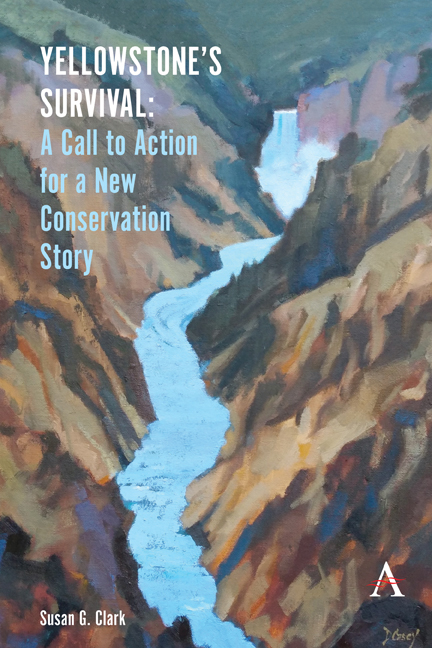 Yellowstone's Survival - A Call to Action for a New Conservation Story
Yellowstone's Survival - A Call to Action for a New Conservation Story Published online by Cambridge University Press: 22 May 2021
The earth was formed whole and continuous in the universe, without lines.
The human mind arose in the universe needing lines, boundaries, distinctions.
Donella Meadows, Global Citizens Columns, 1978“The fate of Yellowstone National Park's wildlife hinges on lands and events far beyond the boundaries,” noted Chuck Preston of the Buffalo Bill Center of the West in Cody, Wyoming. He is just one among a growing chorus of voices making the same point— the GYE is an open system that is constantly in interaction with surrounding areas and as such, a large view of the context is required to effectively attain our conservation goals in the region. The need for a contextual view is valid for all land and seascape systems worldwide, whether parks, reserves, wildlife refuges, or public lands. Context considerations are often underattended to in management and policy.
This chapter looks at GYE's context and allows us to see how the GYE is situated or nested at various scales. In doing so, I target the concept of resources. The GYE is a resource, but what exactly is a resource, how can we grasp GYE resource dimensions, and what are the views we hold about resources? These are more complex questions than one might at first think. Our answer determines what we do to and for nature and wildlife, and ourselves. As we will see, our society has a built-in view of resources that prefigures how we see and exploit nature. A new story of the GYE would change that old view of resource and context to one that truly permits coexistence, sustainability, and adaptability.
Looking at the GYE as a resource, both as a raw (natural) and cultural resource, over varying scales of space, time, and complexity is a subject that ranges from concrete matters (e.g., old faithful) to conceptual and philosophic matters (e.g., what is a resource, who gets to use resources for what purposes, and what are GYE's cultural resources and nonconsumptive values?). Recall that what a resource is changes over time. For example, at one time oil was not a resource, nor was atomic energy. The terms resources, boundaries, and context are notions or linguistic concepts humans made up, so we could use nature in an orderly way.
To save this book to your Kindle, first ensure no-reply@cambridge.org is added to your Approved Personal Document E-mail List under your Personal Document Settings on the Manage Your Content and Devices page of your Amazon account. Then enter the ‘name’ part of your Kindle email address below. Find out more about saving to your Kindle.
Note you can select to save to either the @free.kindle.com or @kindle.com variations. ‘@free.kindle.com’ emails are free but can only be saved to your device when it is connected to wi-fi. ‘@kindle.com’ emails can be delivered even when you are not connected to wi-fi, but note that service fees apply.
Find out more about the Kindle Personal Document Service.
To save content items to your account, please confirm that you agree to abide by our usage policies. If this is the first time you use this feature, you will be asked to authorise Cambridge Core to connect with your account. Find out more about saving content to Dropbox.
To save content items to your account, please confirm that you agree to abide by our usage policies. If this is the first time you use this feature, you will be asked to authorise Cambridge Core to connect with your account. Find out more about saving content to Google Drive.